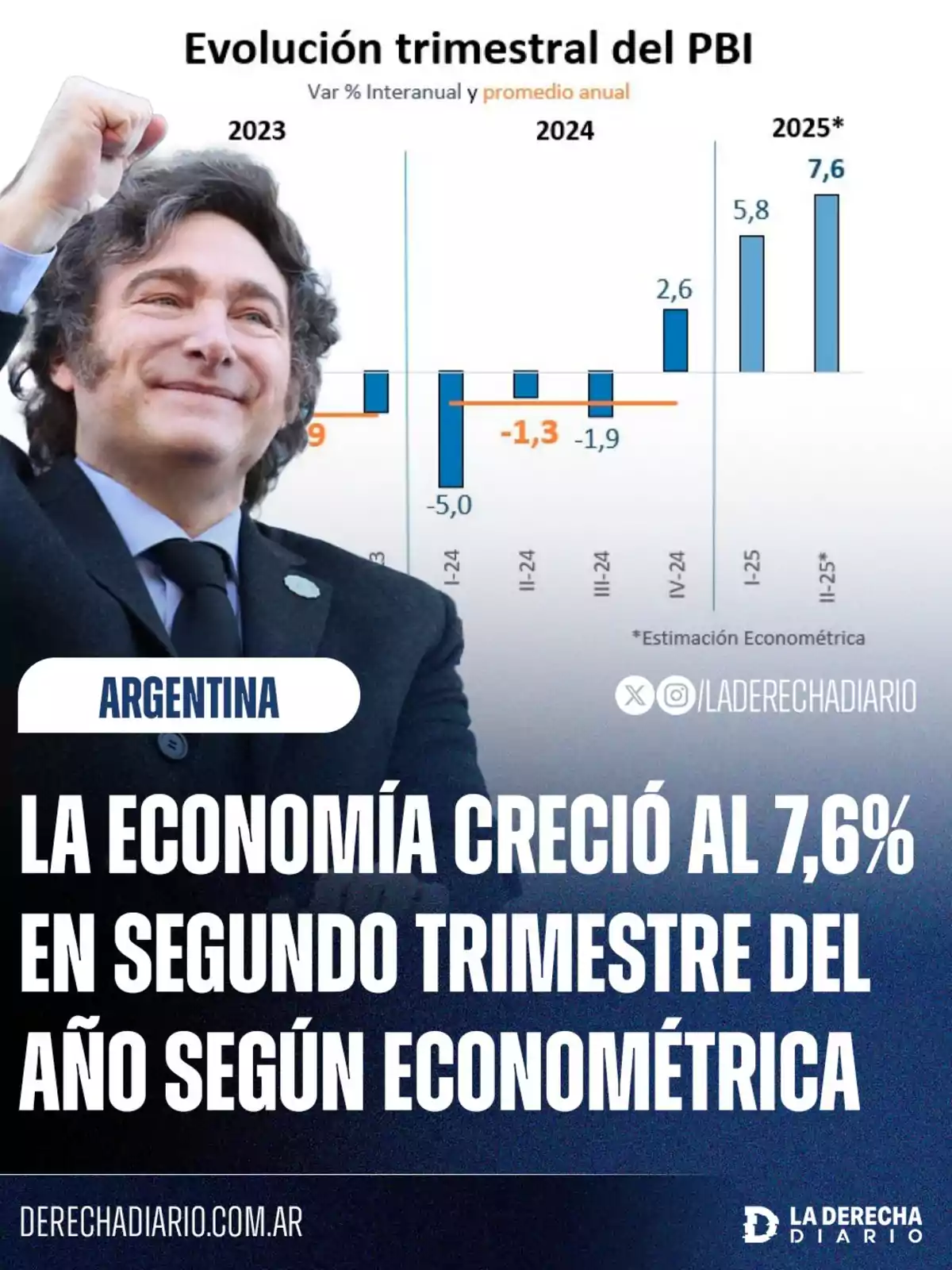
Econométrica projects a 7.6% year-on-year growth in the second quarter
The numbers indicate that Javier Milei achieved a historic rebound of 7.6% during the national recovery
In an economy that just a year ago was struggling to survive hyperinflation, chronic deficit, and a recession induced by decades of statism, the results of Javier Milei's economic management continue to stand out with compelling numbers.
A recent report by Econométrica projects that the Argentine economy grew by 7.6% year-on-year in the second quarter of 2025, thus consolidating a recovery that no one dares to dispute anymore.
This sign of sustained reactivation is joined by the preview of the 2026 Budget Bill, which the Executive Branch submitted to the National Congress. In it, it is estimated that the Gross Domestic Product (GDP) will grow by 5.2% throughout 2025, accompanied by a practically stable dollar and year-on-year inflation below 23%.

Exchange rate stability: dollar fixed at $1,229
One of the clearest signs of the success of the libertarian economic program is the stability of the official exchange rate. The 2026 Budget foresees that the official dollar will close the year at $1,229, a value almost identical to the current one, which suggests that no sharp devaluations are expected for the remainder of the year.
Moreover, the Government anticipates an appreciation of the real exchange rate, with a 8.6% year-on-year drop in bilateral terms, a phenomenon that reflects both the slowdown in inflation and the return of confidence in the peso.
Inflation in decline
Another key data point confirming the economic direction is the deceleration of inflation. According to official estimates, the Executive Branch foresees that year-on-year inflation in December 2025 will be 22.7%, a sharp decrease compared to the cumulative figure for the first five months of the year, which totaled 13.3%.
To meet this target, the monthly pace of inflation between June and December should average just 1.9%, a figure that seems attainable if the trend of recent months continues. This data once again validates the Government's decision to prioritize macroeconomic balance over short-term populism.

The official projection indicates a GDP growth of 5.2% in 2025, with solid sectoral performance. Industry would grow by 5.3%, commerce by 7.6%, and agriculture by 2.1%. Goods would increase their production by 5.1%, while services would do so by 4.6%.
These numbers reflect the positive impact of trade liberalization, the liberalization of relative prices, and the elimination of bureaucratic obstacles that for years stifled the productive sector.
Private consumption, one of the essential drivers of growth, would increase by 7.2% in the year. Public consumption, despite the adjustment, would also rise by5%, reflecting better resource management without undermining activity.
But the most striking figure comes from investment: private investment would soar by 22.7%, a record figure that demonstrates the growing confidence of the business sector in the economic model promoted by President Milei.
Regarding the external sector, exports would grow by 3.7% and imports by 25.2%, suggesting a strong recovery of the productive sector, even at the cost of a lower trade surplus, which is estimated at USD 4.913 billion by the end of the year.
More posts: